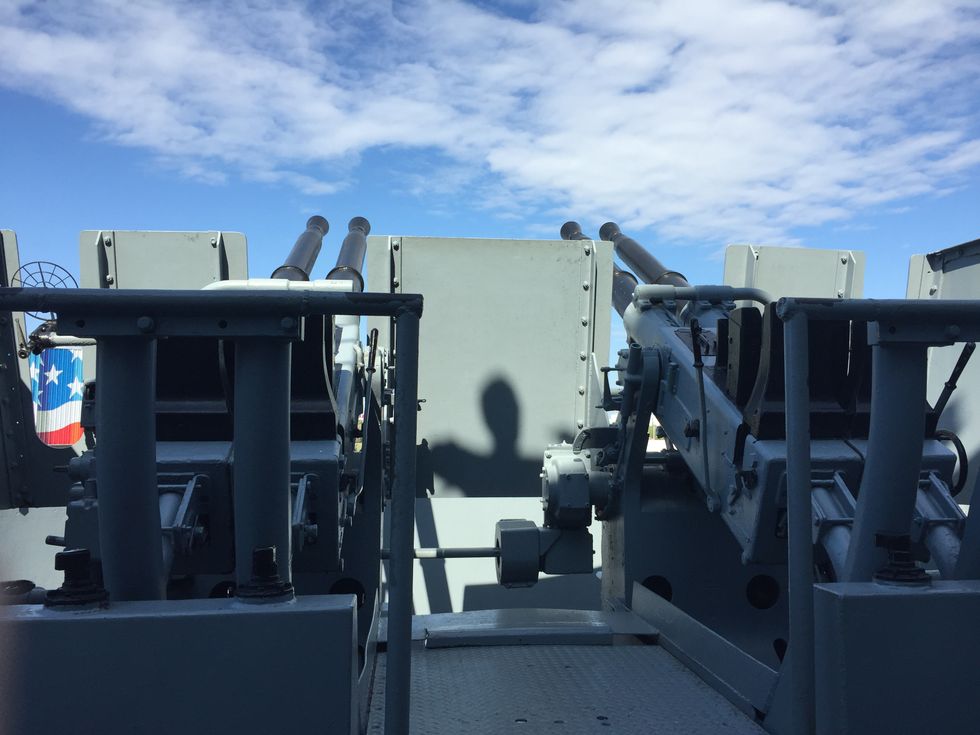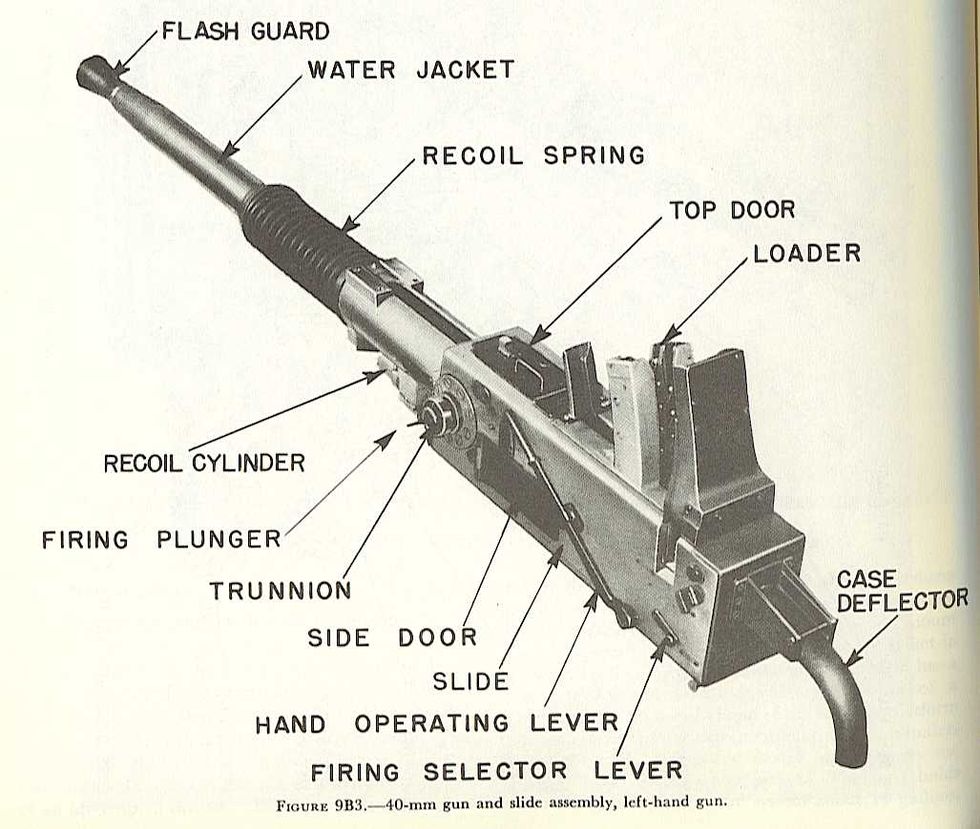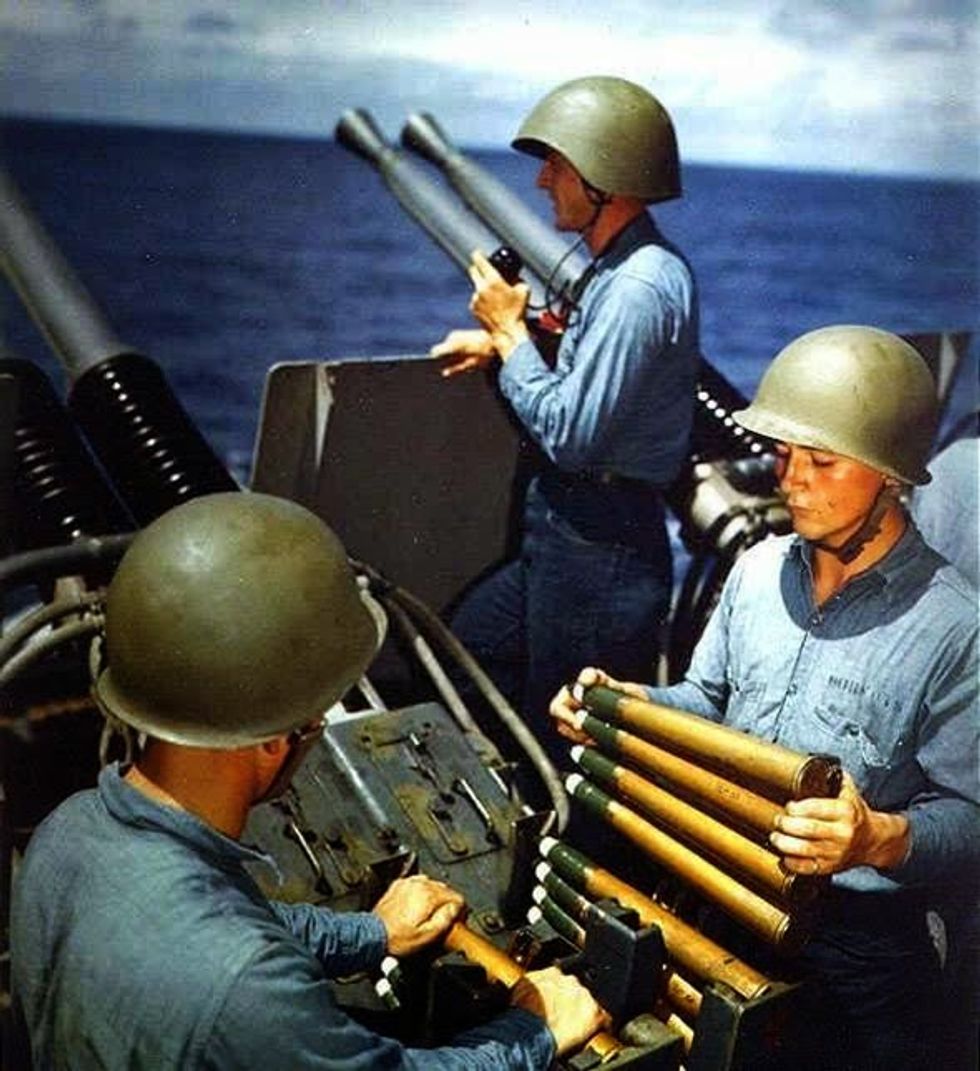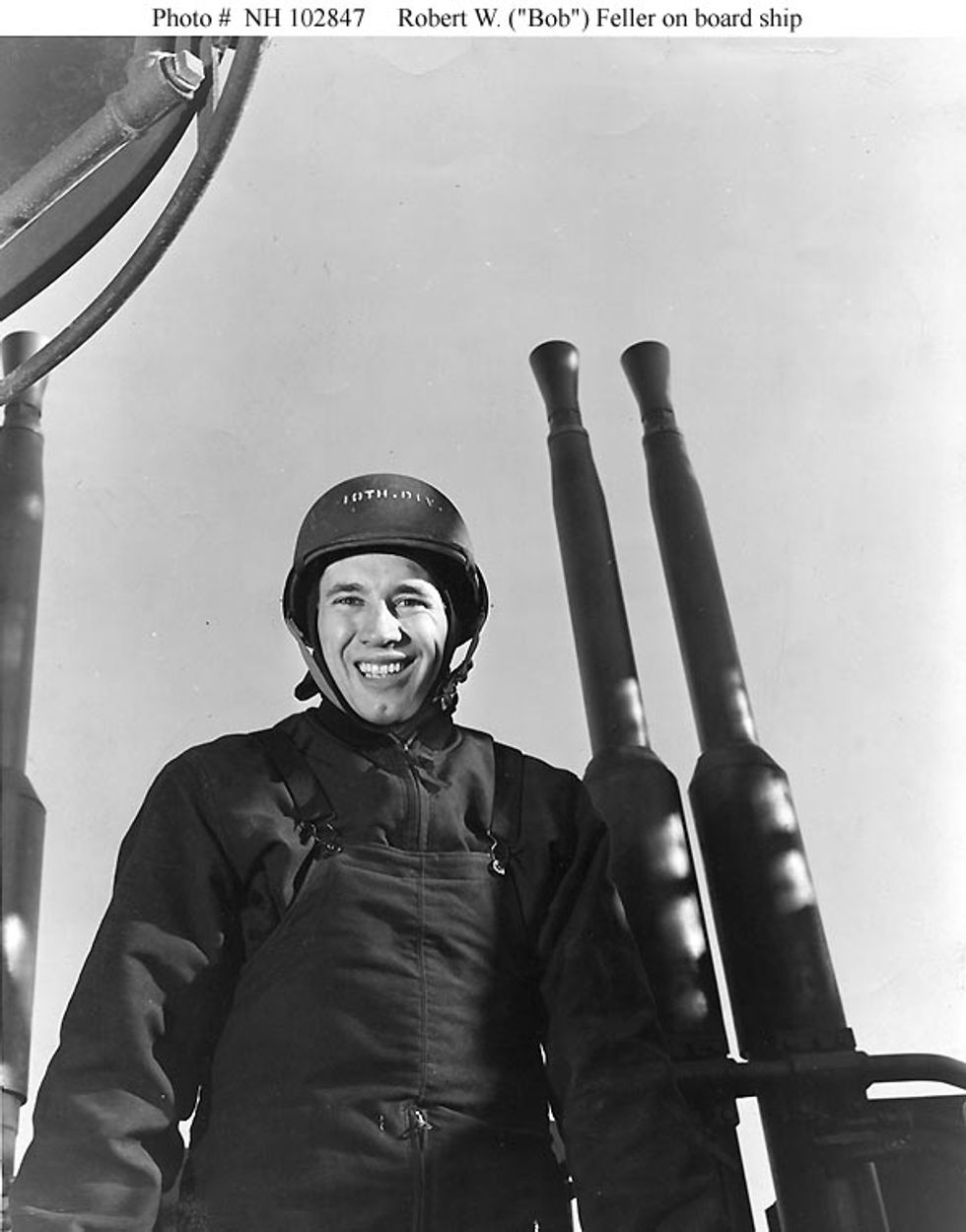I’ve decided to do something different on Odyssey for a little while. I’m going to write a series of articles on the vast varieties of weapons and equipment used in the second World War. All of the major belligerents will be represented including the “bad guys.” So, to start off, I’ll write about an anti-aircraft gun: the 40mm Bofors.
The 40mm Bofors L/60 autocannon was a highly versatile anti-aircraft and multi-purpose autocannon used mainly by the Allies in World War II. Developed by the Swedish firm Bofors Defence, it fired a 2-pound, 40mm (1.57 inch) high explosive projectile at a rate of 130 rounds per minute (a little over two every second).
The gun was first conceived when the Swedish Navy approached Bofors for a suitable replacement for the British Vickers 2-pounder “pom-pom”. Unlike other autocannons, which were magazine or box-fed, the Bofors had a unique open feed system. There was a “hopper” just above the breech, and rounds would be dropped into the hopper. That way, when the gun was firing, it could keep firing as long as the loaders could keep the ammunition coming, without having to stop to reload often. Although loaders couldn’t always keep the ammo coming, the reloading stops still only reduced the effective firing rate to around 100 rounds per minute.
Other nations, including Great Britain and the US, took interest as Germany re-armed in the 1930s. The Royal Air Force ordered several guns from Bofors in 1937 and soon began producing them under license at home. After the Royal Navy was defeated in the Norway Campaign in 1940, it, too, began acquiring the Bofors and replacing the old “pom-poms". Meanwhile, the US Navy began phasing out the old 28mm quad mount autocannons after they proved inadequate at Pearl Harbor.
As the US ramped up its wartime production, Chrysler contracted with the Navy to mass-produce the autocannon. Over the course of the war, Chrysler produced over 60,000 guns and 120,000 gun barrels for both the Navy and the Army, which adopted the autocannon as a towed system. The Navy always operated the Bofors on a double or quad mount, further improving the volume of fire. The main article picture shows a quad mount on the battleship USS Alabama, which had six of these mounts throughout the ship.
So what does all this mean? Well, the 40mm Bofors was a very effective weapon. Thanks to state-of-the-art aiming systems used by the Navy, the Bofors had remarkable success in the Pacific. According to a Navy report, 742 enemy planes, or 33 percent of all kills by American anti-aircraft weapons, fell victim to the Bofors. The Navy loved the gun so much that it sent a telegram to Chrysler every week containing the serial numbers of the guns that shot down aircraft! The gun continued service through the end of the war and was loved by the gun crews.
P.S. By the way, for those readers who enjoy baseball, a notable Hall of Fame inductee commanded a 40mm gun mount during the war. Bob Feller, a pitcher for the Cleveland Indians, served aboard the Alabama at the rank of Chief Petty Officer from 1942 to early 1945 controlling one of the Bofors quad mounts.




















